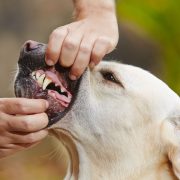Anaesthetic mortality in dogs: A worldwide analysis and risk assessment
Anaesthetic mortality in dogs: A worldwide analysis and risk assessment

Open access
In our edition of: Feb 2024
In our categories of: small animals
our summary:
Redondo, J.I. et al. (2023) Anaesthetic mortality in dogs: A worldwide analysis and risk assessment. Veterinary Record. p. e3604. https://doi.org/10.1002/vetr.3604
The aim of this prospective cohort multi-centre study was, to establish the present level of anaesthetic-related mortality in dogs globally and to identify factors associated with an increase or decrease in risk of death during anaesthesia, to provide information that could be used to develop strategies that improve patient safety during anaesthesia.
The study took place between February 2016 and December 2022 and involved 405 veterinary centres including primary care and referral only practices and university teaching hospitals across various countries. Veterinary centres were recruited via veterinary anaesthesia related societies, social media and by directing mailing to diplomates and residents of the American and European Colleges of Veterinary Anesthesia and Analgesia. A form was distributed to participants for use in every instance of canine anaesthesia with instructions for its use translated into the user’s language. Once completed the forms were automatically emailed to a designated email account.
Each form captured a total of 146 variables and covered the time from pre-anaesthetic medication to 48 hours after extubation. Additional information was requested if a dog died during this timeframe, including details about the circumstances of death, any anaesthetic or surgical complications, further treatment or drugs administered, and the results of any postmortem performed. Deaths were classified into three categories: anaesthesia-related, euthanasia, and medical/surgical related death. The analysis focused on the anaesthesia-related deaths.
The phase of anaesthesia during which the death occurred was classified as intraoperative (occurred during pre-anaesthetic medication, induction, or maintenance periods) or postoperative (occurred after extubation in the operating room or within the first 48 hours after extubation). Statistical analysis included patient demographics, American Society of Anesthesiologists (ASA) classification, procedure type and anaesthetic drugs used.
A total of 55,022 canine anaesthesias were included in the study. Of the 855 dogs that died 378 deaths were related to anaesthesia, giving an anaesthesia related mortality in this study of 0.69%. No dogs were euthanised due to anaesthetic related causes. Seventy-one dogs (19%) died in the intraoperative period and 307 (81%) dogs died in the postoperative period.
Age, obesity, and an ASA classification score of II-V were associated with increased mortality. Unscheduled or emergency procedures, abdominal, orthopaedic, or thoracic surgeries, and a shorter duration of anaesthesia were also associated with an increased risk of death. The authors suggest that the increased risk in unscheduled or short procedures may be due to potential overconfidence among anaesthetists leading to potential neglect of safety measures. The study also showed that some sedatives, systemic analgesics, hypnotics, and the use of locoregional anaesthesia were linked to a decrease in mortality.
Limitations of the study include potential selection bias as the recruitment methods meant that participants were likely to be anaesthesia specialists or have a particular interest in the field, lack of systematic monitoring of veterinary centre response rates which may have affected data quality, the subjectivity in classifying the deaths as anaesthetic or non-anaesthetic related and the limited number of variables analysed.
This study provides useful evidence on the global prevalence of anaesthetic deaths in dogs. It highlights risk and protective factors that can inform clinical decision making and contribute to the development of strategies to improve patient safety and outcomes.
The following may also be of interest:
InFOCUS: Mortality related to general anaesthesia and sedation in dogs under UK primary veterinary care [RCVS Knowledge] [online] Available from: https://infocus.rcvsknowledge.org/mortality-related-to-general-anaesthesia-and-sedation-in-dogs-under-uk-primary-veterinary-care/ [Accessed 16 February 2024]
InFOCUS: Reducing errors in veterinary practice: risk and error in veterinary practice: anaesthesia [RCVS Knowledge] [online] Available from: https://infocus.rcvsknowledge.org/revp-risk-and-error-in-veterinary-practice-anaesthesia/ [Accessed 16 February 2024]
Guidelines for safer anaesthesia [Association of Veterinary Anaesthetists] [online] Available from: https://ava.eu.com/resources/anaesthesia-guidelines/ [Accessed 16 February 2024]
Grubb, T. et al. (2020) 2020 AAHA anesthesia and monitoring guidelines for dogs and cats. Journal of the American Animal Hospital Association, 56 (2), pp.59-82. https://doi.org/10.5326/JAAHA-MS-7055
Claiming CPD for reading inFOCUS articles
Reading and reflecting on articles can count towards your CPD, and we have a template to help you with the process.
Image copyright attribute: edmond77





Leave a Reply
Want to join the discussion?Feel free to contribute!